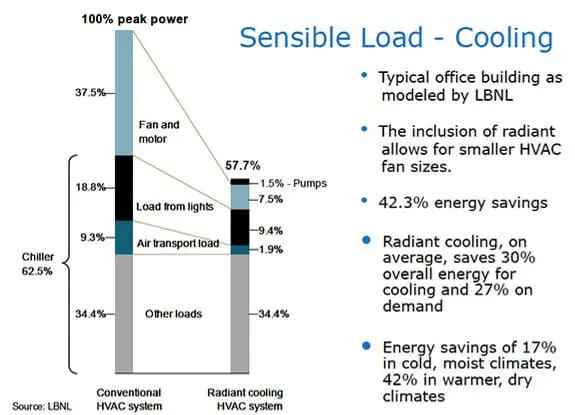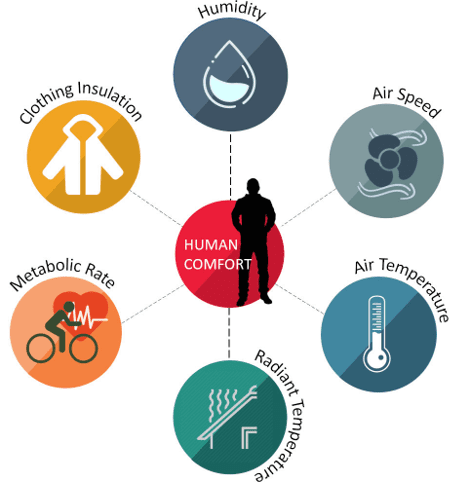
Investigation: Radiant Cooling
Optimal thermal comfort is hard to define and even harder to achieve. But this quest for comfort is central to our human journey on earth. The first part of this two-part investigation explores the history of cooling, thermal comfort basics and hydronic cooling, with a focus on Radiant Cooling.
April 16, 2025 | Posted by Samantha Rusek
Integrated Design Opportunities
According to a 2016 study from the Berkeley National Laboratory, the world is set to install some 700 million air conditioners by 2030, and 1.6 billion by 2050. Most of that increase will happen in developing countries with hot climates, like India, Mexico and Brazil, where populations and incomes are rising. Using a more efficient cooling medium reduces the refrigerant volume needed in each newly installed system.

Thermal Comfort is defined by the ASHRAE 55 and the EN 15251 standard for Commercial and Residential. The conventional way to meet these thresholds is to create a highly predictable, controlled environment using energy-intensive mechanical equipment.
According to the ASHRAE 55 standard, there are six factors affecting one’s thermal comfort, four physical or environmental factors and two personal factors:
Environmental Factors: Air Velocity, Radiant Temperature, Air Temperature, Humidity.
Personal Factors: Clothing Insulation and Metabolic Rate